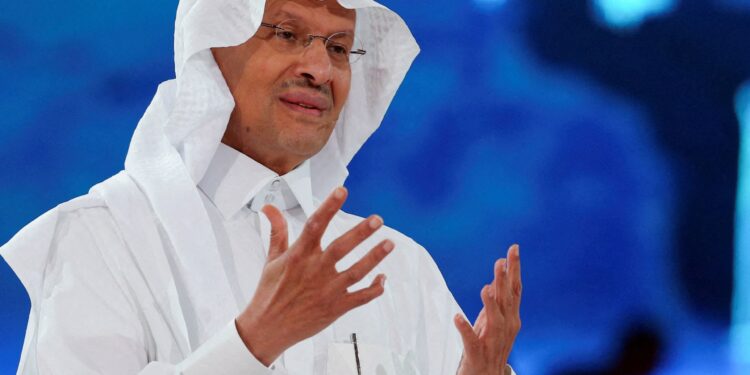The Wall Street Journal reported on Wednesday, citing delegates in the OPEC+ alliance, that Saudi Energy Minister Prince Abdulaziz bin Salman said that oil prices may fall to $50 per barrel if the alliance members do not adhere to agreed-upon production restrictions.
The Wall Street report explained that other OPEC Plus producers interpreted the statements as a threat from Saudi Arabia that it is ready to launch a price war to maintain its market share if other countries do not adhere to what the coalition approved.
The report added that the Saudi Energy Minister warned other producers last week during a telephone press conference of declining prices.
The newspaper quoted its sources as saying that the minister referred specifically to Iraq and Kazakhstan in his talk about excess production.
The Joint Ministerial Monitoring Committee of the OPEC+ alliance, which includes OPEC and its allies led by Russia, will meet later on Wednesday to review the market situation, with no changes expected in oil policy.
Increase production
It is noteworthy that the Financial Times newspaper reported last Thursday that Saudi Arabia is preparing to abandon its unofficial target for the price of crude oil at $100 per barrel as part of its readiness to increase production in order to regain its market share, even at the expense of lower prices.
The British newspaper quoted informed sources as saying that Saudi Arabia is committed to the OPEC Plus plan to increase production as scheduled for the first of next December, even if this leads to a continued decline in oil prices for a longer period.
The market share of the OPEC+ alliance, formed in late 2016, fell to its lowest levels ever after production cuts since 2022 and increased supplies by the United States and other producers, according to the International Energy Agency.
OPEC Plus oil production is equivalent to 48% of the global supply, according to Reuters calculations based on International Energy Agency figures, and Saudi crude production is less than 10% of the global market size, while US oil production has risen to 20% of the global supply.
The newspaper reported that Saudi Arabia considered that it was not prepared to continue giving up its market share to other oil producers, and believed that it had financing options that included foreign exchange reserves and debt instruments, sufficient to withstand the decline in crude prices for a period.
The Kingdom, the world’s largest oil exporter, bears a large share of OPEC Plus production cuts by reducing its production by about two million barrels per day since late 2022.
OPEC Plus members are currently reducing production by a total of 5.86 million barrels per day, equivalent to about 5.7% of global oil demand.
OPEC and Saudi Arabia have repeatedly said that they do not target a specific price for oil, and that they make decisions based on market fundamentals and to achieve a balance between supply and demand.
Third quarter performance
Oil prices fell by 17% in the third quarter of the year, as concerns about the decline in global demand overshadowed concerns about the impact of the expanding conflict in the Middle East on the flow of crude supplies.
The global benchmark crude recorded a 9% decline last September, which is its largest monthly decline since November 2022, and after declining for the third month in a row, it fell 17% in the third quarter of the year, which is its largest quarterly loss in a year. .
West Texas Intermediate crude futures fell by one cent to settle at $68.17.
The US benchmark crude fell 7% last September, its largest monthly decline since October 2023, and fell 16% quarterly in its largest quarterly decline since the third quarter of 2023.



